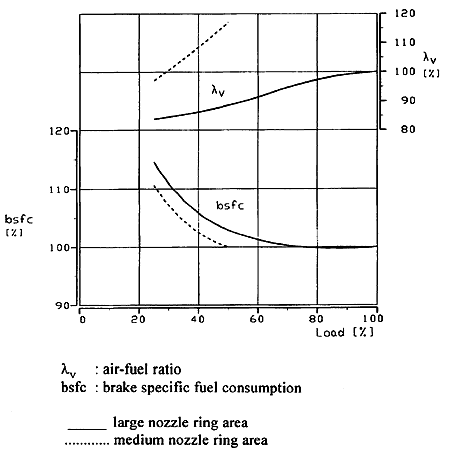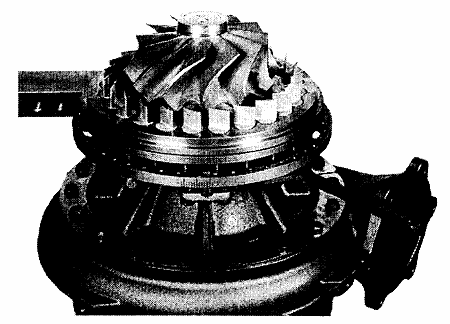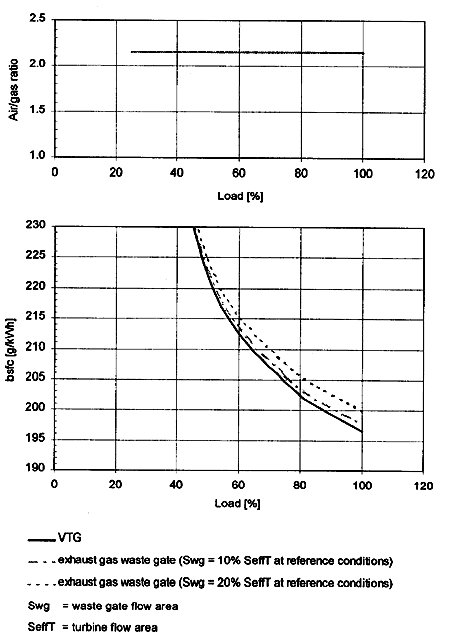6. VARIABLE TURBINE GEOMETRY (VTG)
One of the options which is currently introduced to the market for the TPS..D/E series is a variable turbine geometry. Such an option could be used to optimize the part load behavior, e.g. for propeller applications as mentioned in section 5 of this paper. With a variable turbine geometry, the air pressure at part load can be increased, reducing thermal load, fuel consumption, smoke and NOx emission.

Fig.17: Operating curves of a prototype turbocharger with variable turbine geometry on a typical 200 mm bore engine
The effect of reducing the nozzle ring area for a typical 200 mm bore engine operating on a propeller curve can be seen in Fig.17. This figure shows the measured fuel consumption and the air-fuel ratio when using a large (full load) and a medium (part load) nozzle ring setting.
Another interesting application is for lean bum gas engines, where the air to gas ratio has to be kept within a narrow band. A variable turbine geometry can be used here instead of throttling or waste gate valves.
The advantage of a variable turbine geometry compared with two different waste gate configurations with regard to gas consumption can be seen in Fig.18.

Fig.19: Variable nozzle ring of a TPS57 turbocharger

Fig.18: Gas engine performance VTG vs. exhaust gas waste gate
A number of turbochargers have been equipped with a variable nozzle ring and successfully tested on all applications previously mentioned. The photograph (Fig.19) shows the variable nozzle ring of such a turbocharger, which is in this case a TPS57.
So far, approx. 100 gas engines are equipped with this variable turbine geometry. Some engines have already accumulated up to 10,000 hours of running time without any VTG related problems.
7. CONCLUDING REMARKS
The introduction of the TPS..D/E series is the result of ABB Turbo Systems Ltd. continuous efforts to develop suitable turbocharger equipment for modem small medium-speed diesel engines, large high-speed diesel engines and gas engines. The use of such turbochargers opens new possibilities for developing these engines to give better performance, higher power and improved reliability. With the whole TPS..D/E series, which consists of four frame sizes, an engine power range from 500 to 3200 kW per turbocharger could be achieved.
After completing the market introduction of this series the potential for further development will be examined and continuously adapted for new engine requirements.
BACK CONTENTS NEXT